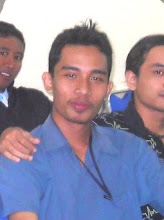Balinese culture and Indian culture have a strong influence, the process is more rapid after the first century AD. Name Balidwipa (Bali Island) began found in various inscriptions, including inscriptions Blanjong published by Sri Kesari Warmadewa in 913 AD and mentioning the word Walidwipa. It is estimated that around this time that the irrigation system water control system for rice cultivation have been developed. Some religious and cultural traditions also began to develop at that time. Kingdom of Majapahit (1293-1500 AD) who are Hindus and centered on the island of Java, had founded the kingdom of subordinates in Bali around the year 1343 AD It was almost all over the country are Hindus, but as the advent of Islam stood Islamic kingdoms in the archipelago, among others, led to the collapse of Majapahit. Many nobles, priests, artists, and other Hindu community when it was out of the way from Java to Bali.
Europeans who first discovered Bali is Cornelis de Houtman from the Netherlands in 1597, though a Portuguese ship had previously been stranded near the promontory of Bukit, Jimbaran, in 1585. Dutch East India Company began to implement through colonization in the land of Bali, but continue to get resistance, so until the end of the power of their position in Bali is not as solid as their position in the Java or the Moluccas. Starting from the northern region of Bali, since the 1840s the Netherlands has become a permanent presence, which was initially performed with the pit-lamb of the ruler of Bali that mutual distrust each other. The Dutch made a major assault by land and sea against the Sanur region, and followed by the area of Denpasar. Parties in Bali that have lost the number and weaponry do not want to experience shame for surrender, thus causing the war to the death or bellows, which involves all the people both men and women including the king. An estimated 4,000 people died in the incident, although the Netherlands has ordered them to surrender. Furthermore, the Dutch governors who ruled only a few gave its influence on this island, so that local control of religion and culture generally remained unchanged.
Japan occupied Bali during World War II, and then a military officer named I Gusti Ngurah Rai Bali forming forces 'freedom fighters'. Following the surrender of Japan in the Pacific in August 1945, the Dutch promptly returned to Indonesia (including Bali) to re-establish its colonial rule like the situation before the war. This was opposed by the resistance forces of Bali who then use the Japanese weapons.
November 20, 1940, burst Puputan Margarana battle that occurred in the village of Marga, Tabanan, Bali middle. Colonel I Gusti Ngurah Rai, aged 29 years, led his troops from the territory east of Bali to take the offensive to death in the Netherlands armed forces. All members of the battalion were killed in Bali is everything, and make it as a last Balinese military resistance.
Mount Agung eruption that occurred in 1963, had time to shake the people's economy and caused many residents of Bali transmigrate to other areas in Indonesia.
Year 1965, along with the failure by the G30S coup against the national government in Jakarta, Bali and many other areas of crushing occurred against members and sympathizers of the Communist Party of Indonesia. In Bali, it is estimated more than 100,000 people killed or missing. Nevertheless, events in the early days of New Order until the date of this law has not been successfully expressed. [5]
Terrorist attacks have occurred on October 12, 2002, a bomb attack in Bali in 2002 at the Kuta Beach tourist area, causing as many as 202 persons were killed and 209 others were injured. Bali bomb attacks in 2005 also occurred three years later in Kuta and Jimbaran beach. These events received extensive international coverage because most of the victims were foreign tourists, and caused the Bali tourism industry facing tough challenges in recent years.














